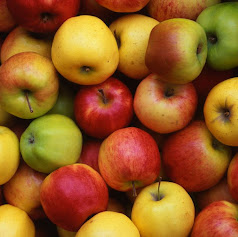Our DNA attests to our oneness – any two human
beings have at least 99.6% of their DNA in common. However, that other 0.4%
difference represents around 12 million molecular base pairs.
Our culture can play a big part in shaping our genetic
variation. Even something as apparently simple as dialectical difference can
shape our genetic differences. A recent (published June 2023) study out of
Vanderbilt University explored these differences. The researchers examined
high-density linguistic and genetic data from England, and found that the
subtle linguistic markers affected the movement and mating preferences of
individuals, ultimately leading to genetic differentiation.2
Yes, we are all one.
Except when we are not.
This is one of the paradoxes of life. We are the same
and we are different, at the same time. The paper referred to above
suggests that there are cultural differences, and that we are not all
(culturally) the same or one.
We are rather like the paradox of light – it is both a
wave, and a particle.
With light it is possible to measure its wave-like
structure or its particle-like structure, but not both at the same time. So, it
is with us humans. We can measure, describe, notice, and acknowledge our
similarities. And, we can measure, describe, notice, and acknowledge our
differences. Most of us though, have difficulty doing both at the same time.
Sadly, there are many who steadfastly hold to just one
of these views.
Holding to the ‘we are all one’ view can lead
to a dismissal, even to a condemnation of difference. Usually, such extreme
views are held by those who, even if subconsciously, think that oneness
is congruent with a same-as-me ideology. When a person,
consciously or unconsciously, believes that oneness (read sameness)
means that everyone is like them and is subject to the same cultural,
historical, political, and judicial imperatives this can lead to racism,
misogyny, homophobic and other judgemental formulations.3
On the other hand, too much emphasis on difference can
lead to similar unhealthy beliefs. Such an emphasis can get displayed as
ethnocentrism, cultural superiority, and ultimately a harmful display of toxic
individuality.
Both conceptions need to be held; furthermore, both
need to be held lightly.
Comparing Apples with Apples
An analogy may be helpful when trying to understand
the sameness and difference paradox.
Consider the apple. Apples are the fruit of the genus Malus,
and are the most widely distributed tree fruit in the world. Apples are one
genus. We could say, Apples are all one.
But we wouldn’t want to apply that notion to the way
in which we eat or bake with apples.
Apples vary widely. There is the Cox’s Orange variety,
with its golden-yellow skin and semi-tart taste. The Ambrosia variety is mostly
red, sweet and crisp. Gala apples have a distinctive red/yellow striped look to
them and are sweet and aromatic. For a very tart variety then Granny Smith
suits the bill, and has a bright green skin. A favourite amongst many for
eating is the Pink Lady variety with its red/pinkish skin and a sweet, crisp
taste.
Apples vary in taste, skin colour, and crispness of
flesh. Apples come into season at different times of the year. Expert chefs
amongst us know which varieties are best for different dishes – apple pie,
apple crumble, stewed apple, or apple sauce.
Yet, apples are apples. Apples are one, except when
they are not.
Another Analogy
Think of a forest. It is one forest. Yet, the variety
within that forest is almost limitless. What makes up that one forest?
Trees, ferns, mushrooms, lichen, insects, birds, mammals, reptiles,
ground-dwelling animals, tree-hugging animals, butterflies. That is just the
species we think of as alive. Within the forest, and making up what is
called forest, there are streams, rocks, sticks, stones, dead leaves,
waterfalls, knolls, dales, mountains. Well, you get the picture.
A forest can only be a forest because of the variety
of life forms and other forms that make it up. It is one, only because it is
many.
So, beware the phrase ‘we are all one.’ It may
hide an ideological belief of cultural superiority, or at least, a belief that my
way of thinking and behaving is the norm.
As the old saying goes: No one size fits all.
We are all one, and we are not. We must acknowledge
the former and respect the latter.
Notes:
1. Other species of the genus Homo include: H.
erectus, H. habilis, H. neanderthalensis, H. ergaster, H. naledi, H. denisova
and up to perhaps 7 or 8 others.
2. Evolutionary biologists determine that
culture shapes genetics within, not just between populations,
Vanderbilt University Research News, 29 June 2023, https://news.vanderbilt.edu/2023/06/29/evolutionary-biologists-determine-that-culture-shapes-genetics-within-not-just-between-populations/
accessed 31 October 2023.

No comments:
Post a Comment
This blogsite is dedicated to positive dialoque and a respectful learning environment. Therefore, I retain the right to remove comments that are: profane, personal attacks, hateful, spam, offensive, irrelevant (off-topic) or detract in other ways from these principles.